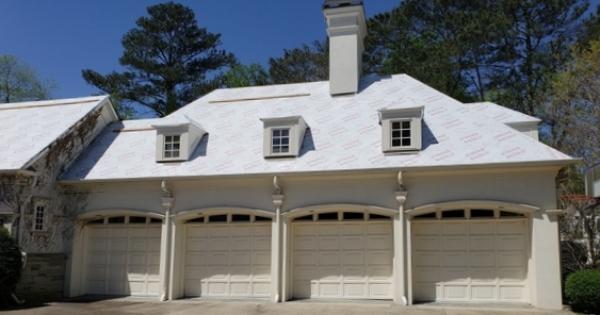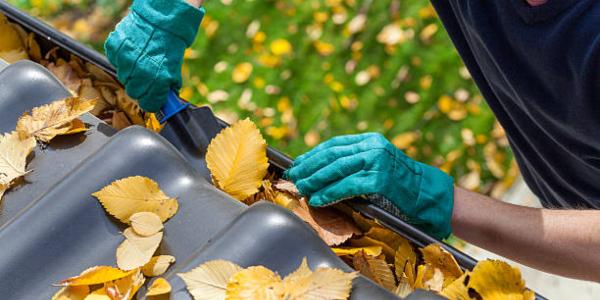Should You Replace Your Roof?

By Cass Jacoby.
Warning signs that your roof is damaged and it is time to call in the professionals.
Roof damage happens. Be it that your roof has lived a full life or something like extreme weather has damaged your roof, fixing it is crucial to having a sturdy roof overhead. Understanding the signs of roof damage is an important part of taking care of problems as soon as possible.
Here is how to look for potential issues and warning signs so that you have plenty of time to add this huge project to your list of to-dos.
Leaks and/or ceiling stains
Water leaks are one of the most obvious signs that your roof has sustained damage. If you notice discoloration on your ceiling, it is time to call your roofer. These stains will often get worse over time and cause additional problems. Reach out to a local company for a roofing inspection so you can quickly identify the source of the leak and get it fixed.
Cracked or missing shingles
Another visually obvious sign of roof damage is if your roof has cracked or missing shingles. Usually a strong storm will rip shingles away from your roof, so be sure to inspect your roof and grounds after the weather event to look for signs of damage. A broken or missing shingle can often result in water leaks that shorten the lifespan of your roof.
Also look for curled shingles or if the shingle tabs are cupped, both are signs of weathering and indicate potential leaks are close to fruition.
Changes in appearance to the roof
If your roof is looking like it isn’t doing very well, your intuition is probably pretty sound. Sagging, moss on the roof, or granules in the gutter are all cause to get your roof inspected. If your roof is looking old and worn out, chances are that it is.
Local10 says that a sagging roof is always a major sign that you are dealing with structural issues. Roofs sag for plenty of reasons, it could mean undersized rafters, too many shingle layers or simply an improper design. A roofing professional can easily figure out the cause of your roof sagging and find an immediate solution.
You want to make sure you call in the experts because a sagging roof is a safety concern, failure to address this problem will eventually cause your roof to collapse. "You're not necessarily in imminent danger, but this is the kind of thing that's a lot easier to take care of when it's small and localized, than when it has progressed," advises Mark Graham, vice president of the National Roofing Contractors Association.
As mentioned above, you want to watch for shingles that are missing or cracked. You can usually tell if there is shingle damage if your find an accumulation of granules in the gutters. Granules protect the house from UV rays, and help keep the roof fire-resistant, FHIA says. Look for “bald spots” where granules are missing.
Also look for dark streaks or moss on your roof. Dark streaks come from airborne algae staining your roof. While this might not necessarily harm roof shingles, it can make your roof look much older than it is. Moss holds moisture against the roof surface and can overtime cause damage to the top of the shingles. Good Housekeeping reccomends contacting a professional roofing contractor for solutions to these problems and to get these stains off your roof. Whatever you do, don't take matters into your own hands by power washing or scraping away at these stains, this will chip off your granules which renders your shingles useless.
Your roof is 20 years old or older
An old roof is an old roof. "An asphalt shingle roof should last between 20 and 30 years," Claude McGavic, executive director of The National Association of Home Inspectors told GH. “If you have a 40-year-old roof, there could be a problem — even if it looks good from the ground."
Neighbors are getting new roofs
Homes in neighborhoods are typically built around the same time and experience the same types of weather conditions. Owens Corning reccomends getting your roof inspected if you see your neighbors repairing and replacing their roofs, as this could be a cue that your roof is nearing the end of its useful life.
Sunlight is bleeding into your attic
You don’t need to hear it from us that this isn’t a good sign. If light can get in so can cold air, rain and snow. A hole in the roof is definite cause for a repair!
Conclusion
Being able to quickly identify roofing damage is a critical part of maintaining your roof and your roof doing its job. Taking care of these problems can often prevent these issues from becoming more severe and will also save you money in the long run. It is always best to catch these issues early on, so be sure to get a professional roof inspection every two to three years, or after a major storm, to stay proactive and extend the lifespan of your roof.
Have a question? AskARoofer.
Find your local roofing contractor in the RoofersCoffeeShop® Contractor Directory.
About Cass
Cass works as a reporter/writer for RoofersCoffeeShop and AskARoofer. When she isn’t writing about roofs, she is writing about movies for her master's degree and dancing with her plants.









Comments
Leave a Reply
Have an account? Login to leave a comment!
Sign In